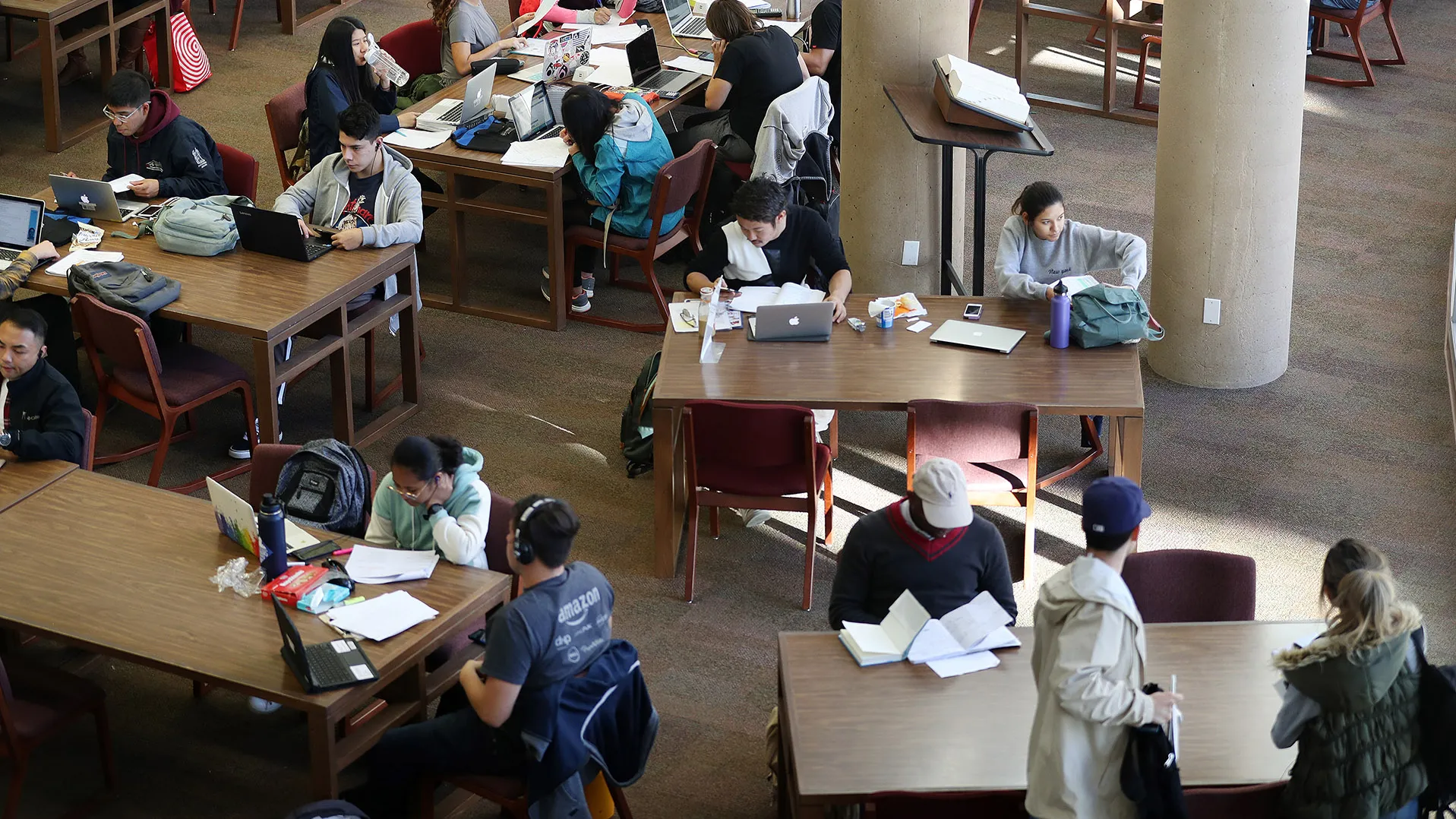Alan Llavore | Office of Strategic Communication | (909) 537-5007 | allavore@csusb.edu

Since 2015, Cal State San Bernardino has participated in a groundbreaking, cost-saving program for students to help lower the cost of what they pay for their textbooks and course materials: Affordable Learning Solutions.
Created by the California State University system, ALS “encourages faculty to discover, adopt, and assign low- or no-cost, quality education materials for their courses,” as Cary Barber, program director and associate professor of ancient history, shared with his colleagues prior to this past fall semester.
Barber took over coordination of the program in 2021 from Bibiana Diaz, associate professor in the Department of World Languages and Literatures. Bradford Owen, associate vice president of faculty development and CSUSB’s chief academic technology officer, has been a long-time proponent of the initiative and continues to provide the institutional support which has kept it growing. From 2015 to the 2022-23 academic year, total savings on course materials have increased from $35,000 to $3.1 million.
“Our goal at CSUSB is to reduce the financial obstacles to students wishing to pursue their degree with us,” said CSUSB President Tomás D. Morales. “This CSU initiative has been a hugely impactful tool, and we look forward to expanding its use on our campus.”
One of the biggest barriers to student success is access to course materials. The inability to purchase textbooks may result in students dropping a full letter grade. While approximately 60% of CSUSB students pay no tuition, that waiver does not include the cost of their course materials. On top of this, textbook costs have increased two- or three-fold (or more) since the 1980s. It is only because of efforts and initiatives across the nation like ALS that textbook publishers have begun to take a step back to look at how course materials are delivered and at what cost.
The program offers various ways to implement the savings. Starting with what were originally called open educational resources – which were faculty created, internationally shared and open access – zero-cost course materials, or ZCCM, have expanded to include a library component. In this latest addition to ALS terminology, the university’s John M. Pfau Library purchases textbook licenses that allow faculty to offer these class materials to students for free.
Another ALS component is called Inclusive Access. Many course materials have software associated with them, which can add significantly to their cost. When faculty adopt IA for their classrooms, a digital or e-version of the materials will include this additional software for a cost reduction of 50-70% for the students.
What does this mean in actual dollars and cents? For example, some accounting classes have seen course material costs drop from over $1,000 to $200. In one astronomy class, the textbook costing $250 was lowered to $0 through ZCCM. A more typical example, however, is a reduction from $120 to $50 in a single class.
At CSUSB’s 2015 initial roll-out, six courses were impacted. That has increased to 681 courses, totaling 25,800 enrolled students. The average class utilizing ALS is saving $400-$600 for their students.
“ALS at CSUSB is almost exclusively run by teaching faculty,” Barber explained. “It takes a great deal of effort for faculty to participate.” He highlights the strength of the initiative as it is being used at CSUSB. “Seed money is provided by the CSU each year. And, because they can see how invested our campus is in offering this cost-saving opportunity to our students, and how committed our faculty are, the Chancellor’s Office works hard to ensure that the funding for the grant continues to be available.”
Requirements for CSUSB faculty participation include demonstrating that their efforts will save 30% or more over past course material costs. Faculty must also participate in an annual April showcase where they make a 4- to 5-minute presentation explaining to colleagues how they made those savings.
In addition, the university utilizes an e-portfolio site, MERLOT.org, which is meant to serve as a nationwide course materials database. It enables faculty to share what they have done in their courses so that faculty teaching similar courses at not only CSUSB but also across the country can make use of these same materials.
In addition to the grant from the CSU, ALS funding at CSUSB is provided by the Provost’s Office along with the office of FCE Instructional Design and Academic Technologies.
“To me, as a fellow faculty member, I really think that rewarding faculty with more than a pat on the back is important. This is not easy work. I have seen faculty spend 200 hours putting something together.” Barber adds, “My job is to find ways to reward them beyond praising their altruism.”
For example, because of the ALS grant, faculty receive $900 for adopting ZCCM and $100 for opting into an IA program. The incentive is payable as professional development funding and disbursed at the end of summer session (upon completion of all requirements).
“Faculty are teaching four or five classes a semester plus doing research and engaging in service,” Barber said. “It is important their efforts towards creating reduced-cost course materials are recognized with professional development financial incentives.” He has also started the conversation on campus about including ALS work in the formal tenure process, as well.
Every year, CSUSB submits to the CSU a report from faculty participating in ALS, which includes what their textbooks used to cost and what they now cost under the program. “I am incredibly encouraged by the growth in adoption,” he said. “We are expanding the program about 20% each year.”
“This is a feel-good program, because it is for the good of everyone involved,” Barber said. “That includes students, faculty, staff and the university’s administration.”
For further information about Affordable Learning Solutions at CSUSB, visit the ALS: Introduction website and view the ALS webinar produced by the CSUSB Pfau Library’s Lisa Bartle . Also visit the CSU’s Affordable Learning Solutions website.